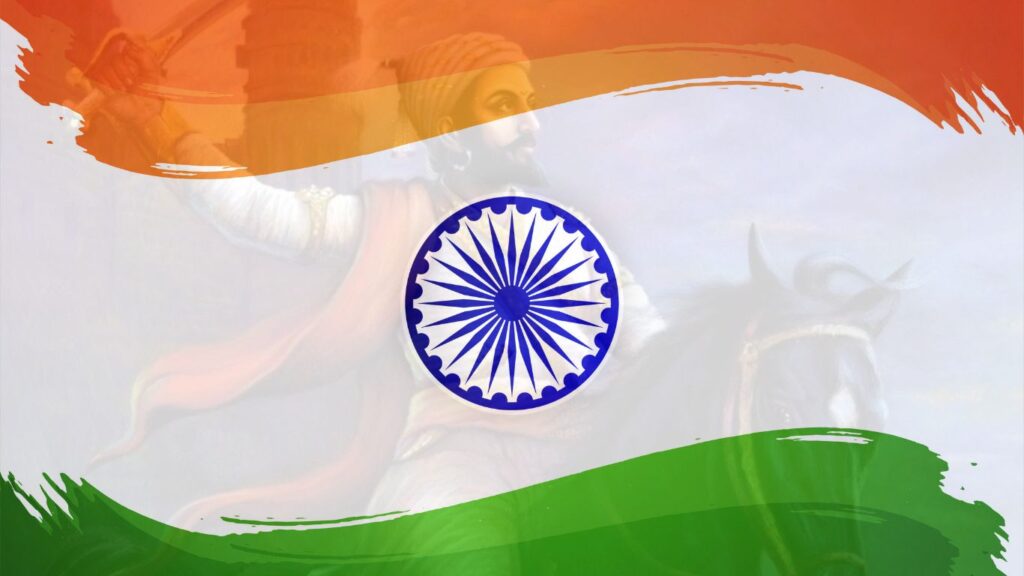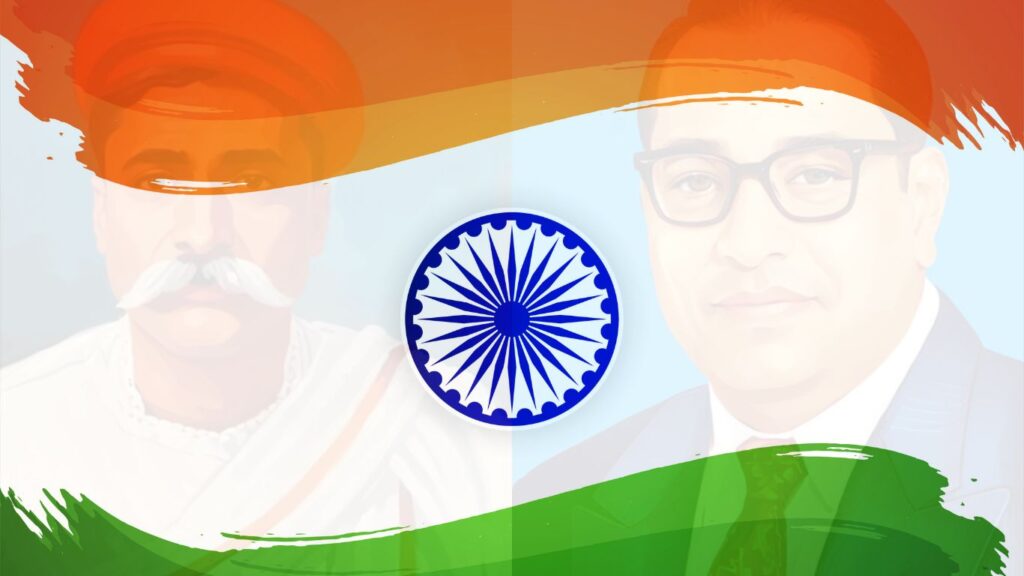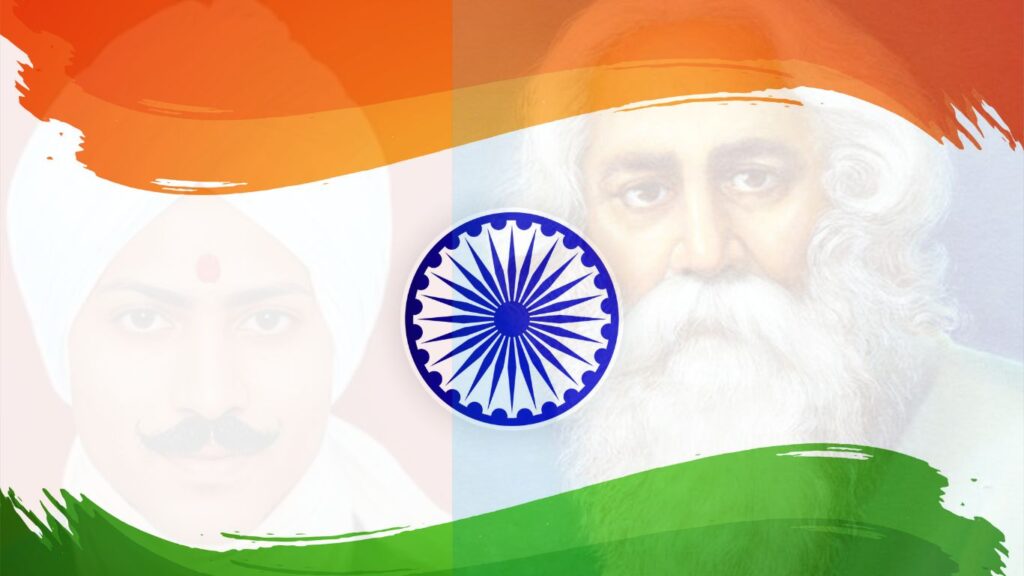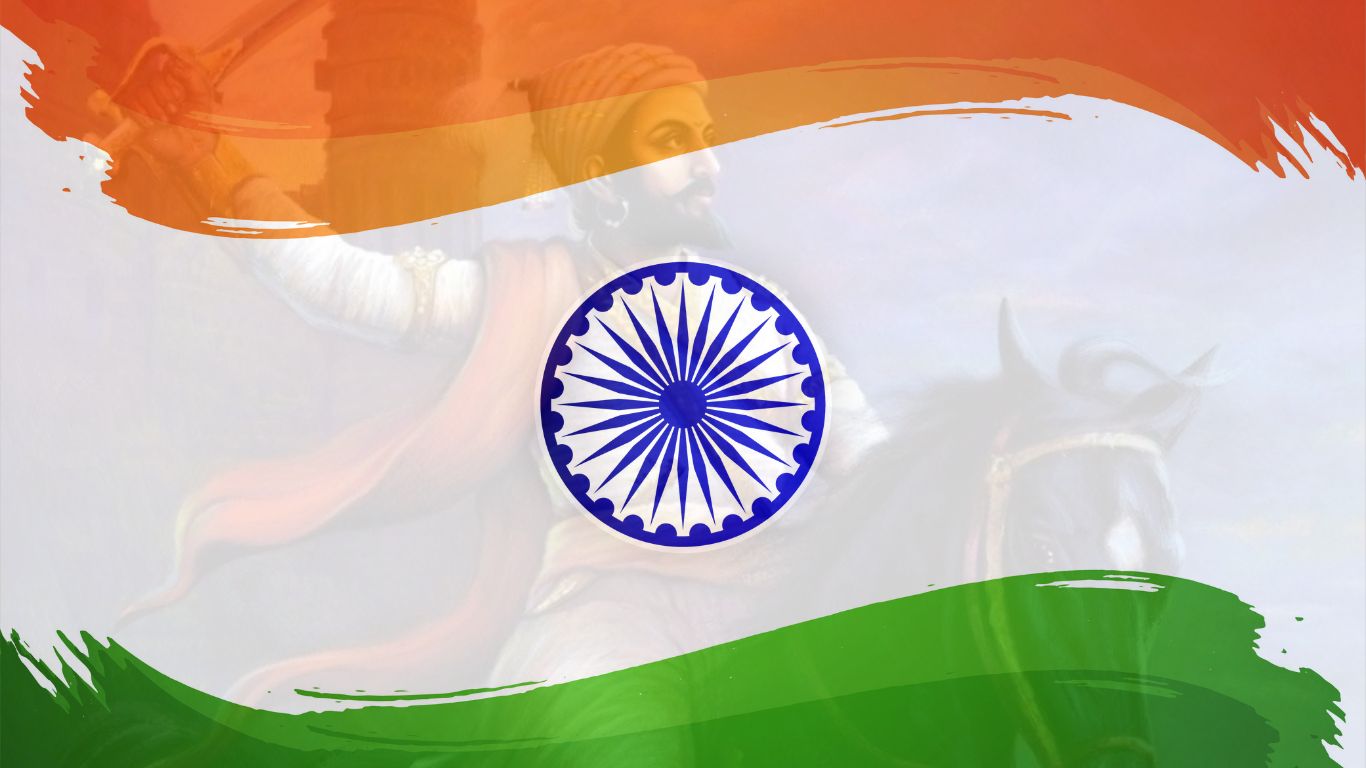Lets Celebrate the spirit of “Happy Independence Day”. Discover the profound bond between the legacy of Chhatrapati Shivaji Maharaj and India’s iconic 15th August Independence Day. Explore how his valor, principles, and dedication to self-governance resonate through history, uniting generations in the pursuit of freedom.
Introduction
Every year, on the 15th of August, India comes alive with the joyous celebrations of Happy Independence Day. As I walk alone on the road on eve of Independence Day, I Can see the preparations of Celebrations everywhere. And as every year I do, I approach some people randomly and ask that Why they are Happy? They stare at me and reply that, Its our Independence Day and this very reason is easy to suffice that why do we feel Happy about. I don’t want to hurt anyone, but its a fact that we wish “Happy Independence Day” every year but the reason for happiness has gradually changed all these years.
We feel that our duty is completed as soon as we attend a Flag hoisting ceremony. Some argue that we should celebrate our freedom the most on August 15 than any other day. I beg to differ. The whole year we live in a democratic country and exercise our power of a countrymen of a Free India and thus enjoy the freedom each day. Lets change our Concept of Feeling Happy on Independence Day.
This momentous occasion marks the triumphant victory of freedom over oppression, as the tricolor flag flutters proudly against the sky. Lets celebrate it by being responsible enough at least on that day and pass on the History of Our Freedom fighters to the new Generation. This article brings you to a part of history that’s not much talked about.
We are inspired by our Freedom Fighters. Who were their Inspirations? This article tries to answer the question. Amidst this jubilant atmosphere, a timeless thread of courage and inspiration connects the legendary Maratha warrior-king, Chhatrapati Shivaji Maharaj, to the significance of 15th August. This thread weaves through history, uniting the aspirations of generations and intertwining the essence of Happy Independence Day with the indomitable spirit of a nation that fought relentlessly for self-governance.

Stepping stone for Todays Independence —- Swarajya Dream
Shivaji Maharaj’s reign during the 17th century unveiled his visionary governance approach, centered around the concept of Swarajya or self-rule. This vision, in defiance of the formidable Mughal Empire and other regional powers, laid the groundwork for aspirations that resonated deeply with the Indian freedom fighters. His emphasis on grassroots administration, equitable justice, and socio-economic upliftment sowed seeds that would later flourish into the ideals of the Independence movement.
Inspiration Through Leadership and Guerrilla Tactics
Shivaji Maharaj’s military acumen and leadership qualities were nothing short of revolutionary. He advocated for guerrilla warfare, employing asymmetric strategies that included intelligence gathering and a decentralized army structure. These very tactics became a cornerstone for the freedom fighters in their quest for liberation. Maharaj’s knack for uniting individuals from diverse backgrounds under the common banner of Swarajya underscored his commitment to a united and independent India.
Catalyzing the Discourse:
What sets Shivaji Maharaj apart is not just his historical achievements, but his ability to galvanize conversations around self-governance and independence. While he predates the formal Indian Independence movement by centuries, his legacy infused the ethos of resistance and sovereignty into the Indian psyche. The echoes of his ideals, however faint, reverberated in the hearts of later leaders and visionaries, nourishing the seeds of India’s eventual struggle for freedom.
Shivaji Maharaj’s Influence on Visionaries:
It is important to acknowledge that while Shivaji Maharaj’s direct influence on the Indian National Congress or later freedom phases might be debatable, his principles indirectly shaped the ideologies of stalwarts like Bal Gangadhar Tilak and Veer Savarkar. His embodiment of valor and self-determination inspired these leaders to champion the cause of a united, independent India, free from colonial yoke.
Swarajya Dream — Revisited
In the annals of India’s freedom movement, the echoes of Shivaji’s spirit found resonance in the words of Lokmanya Bal Gangadhara Tilak. Tilak’s resounding cry, “Swarajya is my birthright,” mirrored the essence of Shivaji’s legacy. The iconic Maratha king’s emphasis on self-rule transcended time, inspiring the modern political discourse in India. Moreover, it was Dadabhai Naoroji, a moderate-leaning economist, who adapted the term ‘Swarajya’ from Shivaji’s lexicon, infusing it into India’s contemporary political lexicon.
Shivaji Utsav —-
For Lokmanya Tilak, Shivaji stood as the embodiment of an Indian hero-statesman. He viewed Shivaji as a Vibhuti, a divine manifestation safeguarding Dharma. The inauguration of the Shivaji Utsav (Festival) breathed life into India’s democratic processes, rejuvenating the spirit of the nation.
He could feel the word “Happy” in Happy Independence Day much before we got Independence in Shivaji Utsav as he very well knew that being just independent is not enough, but to come together for Independence and then enjoy the essence of happy Independence Day every day that what was Swarajya all about.
Even Sri Aurobindo’s pen found inspiration in the valor of Veer Shivaji, emphasizing that the empire Shivaji dismantled had not resurfaced, and the national fervor he ignited remained ablaze.

Influence on Social Emancipation:
Chhatrapati Shivaji’s influence extended beyond political circles. The fire of inspiration that he ignited also coursed through the veins of Bhimrao Ramji Ambedkar, a towering figure in modern India’s social emancipation. This influence manifested in CK Bole Bill in Bombay Legislature in 1923. This legislation, aimed at inclusivity, ultimately gave birth to the Mahad Satyagraha of 1927. Ambedkar saw the word “Happy” in Happy Independence Day very differently. He wanted every person in the society to relate with the word “Happy” whenever we got Independence, irrespective of his caste.
The Mahad Satyagraha and Beyond:
The Mahad Satyagraha, a momentous event sparked by the CK Bole act, saw the rallying cry, “Chhatrapati Shivaji Maharaj ki Jai!” It was a testament to Shivaji’s continued resonance in India’s evolving socio-political landscape. Dr. Ambedkar’s journey to Shivaji’s fort, Raigad, carried profound symbolism. The decline of Swarajya after Shivaji’s triumph troubled him, attributing it to societal disunity. His call for a casteless society echoed Shivaji’s vision of strength within unity.
Preserving Swaraj and Unity:
Amidst today’s challenges of identity politics, Dr. Ambedkar’s insights remain pertinent. He emphasized that preserving Swaraj was intrinsically linked to safeguarding Hindus under its umbrella. He invoked Shivaji’s memory, reflecting on history’s cyclical nature and the need for unity amidst diverse creeds. The pages of the Constituent Assembly debates bore witness to Shivaji’s influence, where the idea of diverse political parties with conflicting ideologies evoked echoes of Shivaji’s era.
Shivaji Maharaj – Inspiration in Inscription
A compelling connection emerged as both Rabindranath Tagore (Bengal) and Subramanya Bharathi (Tamil Nadu), eminent national poets, celebrated Shivaji’s valor. This harmonious convergence of admiration underscores the enduring legacy of Shivaji’s ideals across India right from the North to the South.
Pratinidhi – Guiding about “Happy” in Happy Independence Day
Within the rich tapestry of India’s struggle for freedom, Chhatrapati Shivaji Maharaj emerges as a guiding light whose influence extended beyond battles and kingdoms. Among the many tributes paid to his legacy, Rabindranath Tagore’s poem “Pratinidhi” shines as a beacon of reverence and insight. This timeless composition delves into a poignant encounter between Shivaji and his guru Ramdas at Satara Fort, where Shivaji’s journey takes an unexpected turn, ultimately symbolizing the essence of selfless service and national responsibility.
The Prelude: A King’s Inquiry, A Guru’s Guidance
The poem’s prelude casts a spotlight on an ordinary morning that transforms into a moment of profound introspection. As Shivaji witnesses his revered guru Ramdas engaging in humble begging, a thought springs to life – why is the mendicant, who he considers his disciple, seemingly discontent? This enigma ignites Shivaji’s quest for understanding, setting the stage for a poignant exchange that will redefine his purpose.
A Kingdom Surrendered, Devotion Amplified
Driven by a desire to appease his guru, Shivaji takes an extraordinary step – he donates his entire kingdom to Ramdas. This act of selflessness serves as a testament to Shivaji’s unwavering devotion to both his guru and the ideals they represent. Ramdas, on discovering this sacrifice, confronts Shivaji with a fundamental question – without his kingdom, what shall be his role?
Redefining Leadership: From King to ‘Pratinidhi’
Ramdas’ guidance propels Shivaji on a transformative journey. The guru’s wisdom urges Shivaji to reimagine his role, to cast aside the conventional trappings of kingship and embrace a new identity – that of a ‘Pratinidhi,’ a representative. This profound shift signifies not only Shivaji’s commitment to his people but also the embodiment of leadership guided solely by the service of the nation.
The Symbolism of the Bhagwa Dhwaj
As the dialogue between Shivaji and Ramdas unfolds, the poem culminates in a powerful symbolic gesture – the adoption of the Bhagva Dhwaj, the Saffron Flag. This iconic emblem becomes Shivaji’s Royal Standard, a visual representation of his transformation and a pledge to lead with the spirit of selfless service and devotion to the nation.
A Resonance Beyond Time: Lessons for Freedom
Tagore’s “Pratinidhi” transcends the confines of a historical narrative, capturing a universal truth. The exchange between Shivaji and Ramdas epitomizes the fusion of leadership and service, urging individuals to rise beyond personal power and embrace responsibility for the greater good. This theme resonates harmoniously with the broader struggle for India’s independence, reminding generations of the ideals that underpin the fight for freedom.
As Shivaji’s transformation echoes through the verses of “Pratinidhi,” his journey from king to ‘Pratinidhi’ becomes a metaphor for the nation’s evolution. The poem should also inspire todays youth and individuals to navigate their roles with a sense of duty, service, and sacrifice and not mere Celebrations. Independence is there to stay. It is our role to make it a Happy Independence Day bringing happiness in others life by being representative and not being in a dictating mode every time

Another Poem to Reawaken the Spirit of Fight to Achieve Freedom
In the heartland of Tamil Nadu, Subramania Bharathi found in Veer Shivaji a beacon of national revival. Intriguingly, just as Shivaji was divinely intoxicated in his devotion to the Motherland, Bharathi too bore this fervent spirit. His poetic homage to Shivaji comprises 190 lines, a testament to his deep reverence. Serialized in the magazine ‘India’ during 1906, these verses resonate with the essence of Shivaji’s legacy and India’s enduring struggle.
The Verses of Resurgence:
Bharathi’s verses echoed the chant of resurgent India with the invocation
“Jaya Jaya Bhavani Jaya Jaya Bharatam,
Jaya Jaya Mata! Jaya Jaya Durga,
Vande Mataram! Vande Mataram!”
The power of ‘Vande Mataram,’ a feared anthem by anti-India forces then and now, defied temporal boundaries, emphasizing Shivaji’s timeless influence.
Shivaji’s Glorious Tapestry:
Through Bharathi’s verses, Shivaji eloquently extols Bharat’s glories—geographical, spiritual, and civilizational. From the Himalayas’ grandeur to the sacred rivers’ sanctity, the verses paint a vivid tapestry of India’s heritage and its enduring ethos.
Confronting Atrocities:
Bharathi’s poetic canvas also unveils the harsh realities of foreign rule. Just as Shivaji confronted invaders, Bharathi’s verses lay bare the devastation wrought by aggressors. The invaders’ desecration of temples, disregard for sacred texts, and atrocities against the helpless resonate with Shivaji’s own fight against foreign domination.
The Call to Choose and Fight:
Shivaji’s voice, channeled through Bharathi’s verses, calls upon warriors to make their choice. It’s a voluntary path, not obligatory. Those desiring to retreat from battle may, yet Shivaji’s spirit beckons those who stand firm for the Mother’s cause.
Yajna of Liberation:
In a stirring parallel, Bharathi depicts the battlefield as a yajna—a sacred sacrifice. Just as warriors offer their all for Moksha, those who fight for Motherland’s liberation ascend to a hero’s heaven. This sacrifice, an offering of heart’s blood, emerges as the ultimate yajna, transcending the mere physical realm.
Bharathi’s Resonating Call:
Bharathi’s impassioned call through Shivaji’s voice resonates, inspiring the youth of Madras and beyond. The poem covertly addresses the educated class’s complacency under British rule. It unveils the oppressive actions, both through education and evangelism, employed by the British to emasculate India’s civilizational essence.
A Continuum of Inspiration:
In Subramania Bharathi’s verses, Shivaji’s legacy persisted as a source of fervor, unifying regions and generations. The poetic homage transcended time, uniting Bharathi’s Madras with Shivaji’s Maharashtra, creating a thread of unyielding spirit that continues to weave through India’s tapestry of freedom and unity. So, Subramania Bharathi translated the word “Happy” in Happy Independence Day as being united after Independence not only on History records but actually in real life so that we can enjoy our freedom to the fullest.
Conclusion
So, as we greet each other “Happy Independence Day”, keep in mind that you have to be responsible about how to express “Happy” in the warm greeting. “Happy” in Happy Independence Day should reverberate for you in the inspiring stories, in the inspiring poems. “Happy” in Happy Independence day should be in doing some responsible work that day instead of Celebrating the Holiday as just any other holiday.
Chhatrapati Shivaji Maharaj’s influence extended far beyond his time, inspiring not only his contemporaries but also generations of leaders and freedom fighters. His valor, principles, and commitment to self-governance resonated with figures like Subramania Bharathi, Rabindranath Tagore, Bal Gangadhar Tilak, and Vinayak Damodar Savarkar.
These visionary leaders recognized in Shivaji a symbol of national resurgence and unity, infusing his legacy into their ideologies and movements. The enduring impact of Shivaji’s legacy on India’s struggle for independence underscores his role as a timeless beacon of courage, justice, and dedication to a free and sovereign nation. For him, Dream of Swarajya was never meant to be a mere Independent Nation. It was more about the Individuals living in his Swarajya and feeling the word “Happy” in correct emotions when exchanging the greeting “Happy Independence Day” to each other.
